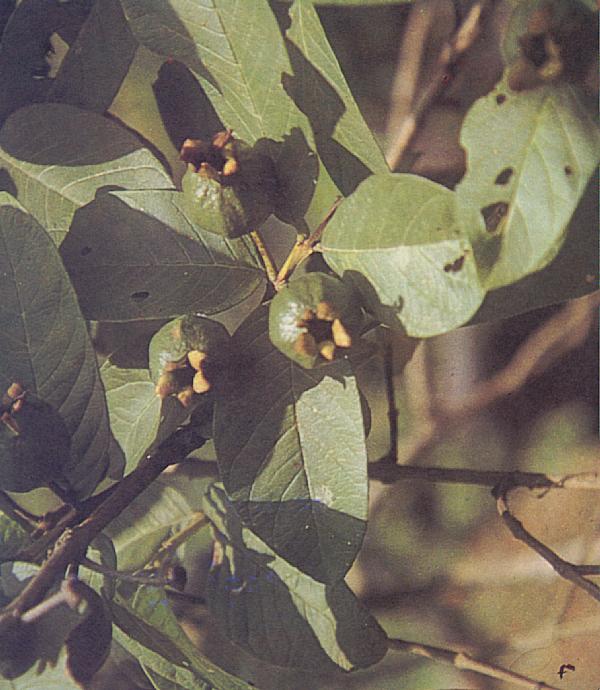 |
 |
|
Bayabas Family myrtaceae Scientific name: Psidium guajava l. Local names Bagabas (Ig) Bayabas (Ibn, Ilk, Tag, C. Bis) Bayauas (Bik) Bayabo (Ibn) Biabas (Sul) Gaiyabat (If) Gaiyabit (If) Getabas (Bon) Geyabas (Bon) Guayabas (Tag) Guava (Engl) Guyabas (Ilk) Tayabas (Tag) Traditional uses a. bark 1. decoction used as wash for wounds 2. decoction used as gargle in pharyyngitis and tonsillitis, as nasal lavage, in colds, and as wash in swelling of middle and oute ear 3. decoction used as enema for diarrhea and dysentery 4. decoction of dried bark taken in to remedy stomach ache b. leaves 1. poultice applied for rheumatism, sore or local inflammation 2. fresh leaves applied on newly circumcised penis 3. fresh tops chewed to relieve toothache 4. decoction used as wash for wounds, ithches and aromatic bath 5. decoction used as mouthwash for swollen gums, as gargle for pharyngitis and tonsillitis, as nasal lavage in colds and as wash in swelling of the middle or outer ear 6. decoction taken in for diarrhea and abdominal pain 1. decoction taken in for diarrhea d. fruit 1. decoctionof unripe fruit used for washing wounds and ulcers 2. juice extracted and mixed with burnt rice for diarrhea 3. unripe fruit eaten to control diarrhea, to control vomiting and to expel intestinal worms research findings the roots and bark are rich in tannin, 12 to 30% the stern contains saponin and amygdalin clinical trials have found decoction of the leaves effective for diarrhea and stomach ache food values the guava is one of the most popular and most common fruits in the Philippines. The fruit is eaten fresh, made into jelly or used as a seasoning for food. Recommended medicinal uses For diarrhea and stomch ache: if fresh leaves are available, boil leaves(6 tbsp for adults, 3 tbsp for children 7 to 12 yrs. Old, 1 1/2tbsp for 2 to 6 yrs. Old) in glasses of water for 15 minutes. Cool and straindivide the decoction into 4 parts. Take 1 part every 2 or 3 hours. If dried leaves are used, follow the procedure as in the preparation of the decoction from fresh leaves but use 8 tbsp dried leaves for adults, 4 tbsp for 7 to 12 yrs. Old and 2 tbsp for 2 to 6 yrs. Old As aromatic bath, mouth wash, vaginal wash and wash for wounds and ithching: boil enough leaves in water for 5 minutes. Use the lukewarm decoction. For toothache: chew but do not swallow the fresh leaves For dysentery: chew fresh tops of leaves 2 times daily and swallow juice Botanical and agricultural characteristics Habit: tree Habitat:thickets and secondary forest at low altitudes. Propagation: seed, grafting, marcotting
|